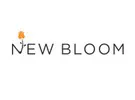In a recent episode (April 14) of the Blooming News Alert series, Sahid Nahim talks with Professor Charlie Hall, a renowned floriculture economist and professor at Texas A&M University, who breaks down the potential economic impact of the proposed U.S. flower import tariffs.
Currently, for all countries except China, there is a 10% import tariff—10 percent on top of the tariffs that are already standing. So, Colombia went from zero to 10%, Ecuador from 6.8 to 16.8 and Canada and Mexico are still at zero due tot the United States-Mexico-Canada Agreement. According to Hall, it is important to understand that it is not the exporting country that will pay the tariff, but the company in the importing country.
How the import tariff will be passed through the supply chain is a question too. It depends on how much is being absorbed in the supply chain, he explains. Will the importing company be willing to lower their price? Will they split the tariff? And so on. Those with working capital, small or large, will be in a better position. So, according to Hall, the impact on the final price for the consumer is not known yet. But we do know that it is going to be more expensive, also because the prices of floral supplies will be affected too.
When looking at consumer behavior, Hall points out a striking trend. During the pandemic, the sales of flowers, seeds, and potted plants were growing—at a 35-degree angle—and plateaued in the middle of 2022. It did not go down, as it has in every other economic recovery since the early 1900s. "And these are real dollars, already adjusted for inflation." According to Hall, this is very encouraging.
"Will florists start switching from farm to importer?" a viewer asked. Because the importer is then paying the tariff? According to Nahim, it is expected that they will start to buy more from Miami, but time will tell. Hall stresses that it all depends on the price break versus whether or not they've got the cash flow to handle the tariff payments themselves.
Also in this conversation, they Hall and Sahid often refer back to COVID times. Hall gives some tips, like: have proper working capital, be nimble, have contingency plans in place—not just a Plan B but also C—and safeguard your profit margins, making sure that you're offering price points for different products.
At the end of the conversation, Nahim asked Hall if he wanted to tell the industry something. He said: "Yes, I'll go back to my old standby—and that's, you better nail your value proposition down and have it tight in situations like this. There's a very wise woman in the industry who I've heard say this many times. She says, 'What would people miss if your business wasn't around?'"
Watch the full interview below:
For more information:
New Bloom Solutions
www.newbloomsolutions.com
